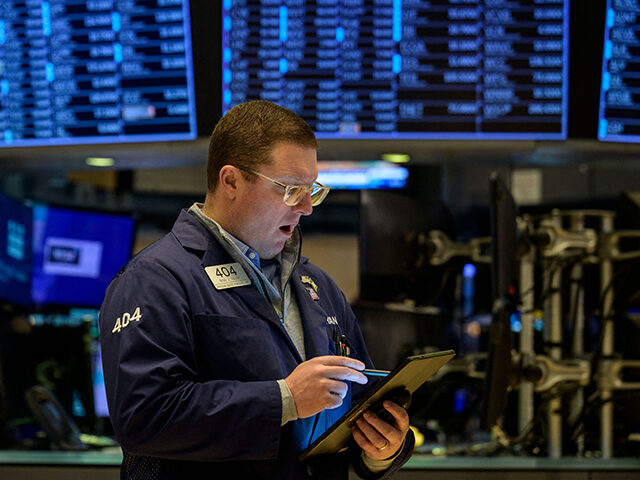As the great American sage Yogi Berra once put it: it’s like deja vu all over again.
A year ago, the “resilient” consumer was expected to prop up holiday sales in December despite rapidly raising prices. Overall sales were expected to be down one-tenth of a percentage point due to weak sales in autos, largely reflecting a shortage of new cars to sell. Excluding autos, sales were expected to rise three-tenths of a percentage point.
A big part of this optimism was the fact that sales had been stronger earlier in the fourth quarter, which many analysts and retailers interpreted as foreshadowing a strong holiday season. We warned at the time that it looked like something very different to us: people were doing their holiday shopping earlier, and this front-loading was likely to mean weaker sales during the traditional shopping season, especially December.
When the December retail sales numbers were released in January of 2022, it was a debacle. Overall sales were down 1.9 percent. Excluding autos, sales were down a shocking 2.3 percent. The November gain was revised down to 0.2 percent from the initially reported 0.3 percent increase.
It all happened again. Sales were strong in October of last year, rising 1.3 percent compared with expectations for a one percent gain. The labor market went from strength to strength, refusing to kowtow to Fed Chair Jerome Powell’s demand for softer demand for workers. Real wages actually increased in November and December. Disinflationary forces were rising alongside consumer confidence. There was even a few extra-weekend days in December that were thought to create additional time for consumers to shop-till-they-dropped.
“Americans stepped up their spending at retailers, restaurants, and auto dealers last month, a sign of consumer resilience as the holiday shopping season begins amid painfully high inflation and rising interest rates,” the Associated Press rejoiced.
We went the other way, warning that this looked like another head fake. Wall Street’s analysts were more cautious this time around but still too optimistic. The consensus expectation was for a 0.8 percent decline, according to Econoday. Excluding motor vehicles and gas, retail sales were expected to dip 0.1 percent. The most pessimistic forecast in the Econoday survey was for a 0.2 percent decline in retail sales excluding autos and gas, with the upper range seeing a 0.5 percent gain. A notable exception here was Bank of America’s team of Ethan Harris and Jeseo Park, who forecast a 1.4 percent decline in headline sales and a 0.8 percent decline in the ex-autos and gas figure.
Not only did retail sales for December come in below expectations, the November figures were revised down—just like last year. Headline sales dropped 1.1 percent and ex-autos and gas dropped 0.7 percent. November sales were revised down from a 0.6 percent contraction to a one percent decline. Excluding autos and gas, the revision in retail sales for November more than doubled the decline to 0.5 percent from 0.2 percent.
A big problem appears to be a distortion stemming from the seasonal adjustments. These assume a huge gain in sales from November to December. The front-loaded shopping that we’ve seen in the post-pandemic period means that even a sizable gain in unadjusted sales shows up as a decrease after adjustment. The unadjusted numbers show a sequence of gains from $688 million in sales in October, to $695 million in November, to $749 million in December. Adjusted these come to $692 million in October, $685 million in November, and $677 million in December. In other words, three months of consistently rising sales before adjustments becomes three months of falling sales after adjustments.
This does not excuse so many Wall Street analysts for their inaccuracy. This problem should be easy enough to include in the estimates. Indeed, that’s a large part of why Bank of America’s team was able to predict the disappointment.
What looked like hopeful economic data a week ago now looks like an augury of a faster-than-expected economic collapse. The combination of the stronger-than-expected jobs figure and the weaker than expected consumer inflation figure had many reviving the possibility of a “soft landing” for the economy—Wall Street lingo for exiting the period of high inflation without a serious economic slump. Not any more. The retail sales figure is only the latest grim economic data received this week.
The producer price index for final demand fell by 0.5 percent, indicating a big decline in consumer demand. The index for intermediate demand, basically business-to-business sales, fell by 2.9 percent. Industrial production dropped 0.7 percent, much worse than the 0.1 percent forecast. Manufacturing output for December dropped 1.3 percent, and November’s 0.6 percent fall was revised to a 1.1 percent decline. Yesterday’s Empire State Manufacturing indicated a plunge in both output and forward-looking demand signals.
The expansion ain’t over until it’s over. But this week’s data suggest the recession may not be as far off as it looked a week ago.


COMMENTS
Please let us know if you're having issues with commenting.